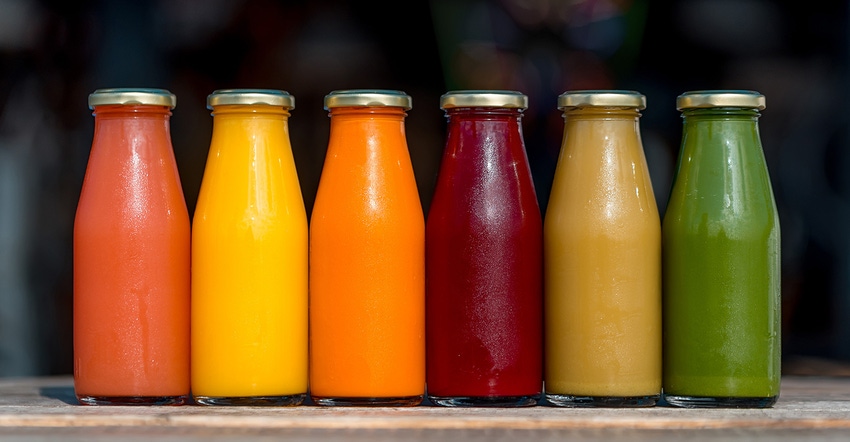Functional beverages innovate by including both animal- and plant-based protein, vitamins and fiber.

Some of the most popular beverage types deliver nutrients that address daily dietary needs like protein, vitamins and fiber. Protein has exploded over the last several years and the global ready-to-drink (RTD) protein beverage market is expected to reach US$4.1 billion by 2025 with a compound annual growth rate (CAGR) of 7.9 percent over six years, according to Grand View Research. Brands are differentiating their products by adding more protein, formulating with plant-based proteins, and incorporating protein into new product categories like water, juice and coffee.
Whey and milk are the most common sources of protein in RTD beverages, but plant-based protein beverages are slated for growth. Beyond just beverages, plant-based protein supplements are expected to grow at a CAGR of 7.9 percent through 2025, whereas animal-based protein sources have a projected CAGR of 5.6 percent for the same period, according to Grand View Research.
Brands can innovate with protein by incorporating it into new beverage categories. For example, protein waters are relatively new and gaining momentum thanks to the health halo around water and popularity of functional beverages. According to Nielsen, the protein water market increased 563 percent in the U.S. from 2015 to 2017, and growth is expected to continue.
Other nutrient-enhanced beverages such as Vitamin Water and Sparkling Ice are popular with consumers, as well. Fortune reported Sparkling Ice experienced a 6,570 percent increase in sales from 2010 to 2016. The brand continues to thrive, and several private label varieties have been developed as a result.
Newer on the market are nutrient-dense RTD beverages enhanced with prebiotics, a type of fiber, like Hellowater and Wanu (which is also enhanced with vitamins). Consumer awareness about the benefits of a healthy gut and the positive publicity that probiotics have received over the last few years have peaked consumer interest in prebiotics. Beverages can be a delicious and convenient way for consumers to get more fiber in their diets, and since incorporating prebiotics in beverages is still somewhat novel, there’s plenty of room for innovation.
Read this full article and gain other insights in crafting successful drinks in INSIDER’s Beverages digital magazine.
Holly McHugh is the marketing associate at Imbibe, a Chicago-based beverage development company. She focuses on the company's external communications and brand awareness. She also monitors and analyzes beverage trends to guide clients in making strategic decisions about product development. McHugh’s market insights have been published in BevNet, Beverage Industry, Natural Products INSIDER, Prepared Foods, and Food Ingredients First. She has a bachelor's degree from Columbia College Chicago and a master's degree from the University of Denver.
About the Author(s)
You May Also Like






.png?width=800&auto=webp&quality=80&disable=upscale)